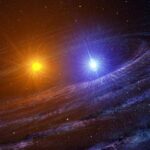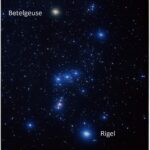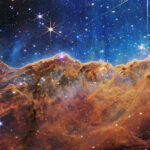
Many people have at least a passing interest in astronomy. It’s why, even though my graduate education is in chemistry, I’m always sure to tell new acquaintances that I taught astronomy for much of my career. Chemistry is probably more…

Many people have at least a passing interest in astronomy. It’s why, even though my graduate education is in chemistry, I’m always sure to tell new acquaintances that I taught astronomy for much of my career. Chemistry is probably more…

Standing under a starry sky on Earth, the variety we see among those distant points of light is mostly limited to their brightness. If we peer closely, we can see some color variation as well. In the winter constellation of…

In the post previous to this one, we discussed two of the five operational images released from the James Webb Space Telescope (JWST) on July 12th. Let’s take a look at the remaining three. A QUINTET OF GALAXIES (OR IS…
The James Webb Space Telescope (JWST) is a remarkable feat of engineering. Folded like an origami to fit into the rocket that launched it into space, it has successfully carried out a series of steps to reach its final destination…

This blog has addressed the question of how stars get their names before. This is about some star names with very unusual origins. During the Apollo moon landing program, the ability of astronauts to determine their position and velocity independently…
Two of the most fundamental properties of any astronomical object are size and distance. How big is it, and how far away is it? The vast scales of cosmological distances are determined by a variety of methods, just as one…
No, we aren’t talking about Tom Hanks or Meryl Streep. These are the stars you see in the sky at night. If you have ever been confused by statements like the following, then let’s see if we can help you…
How many stars can you call by name? Unless you are a devotee of the night sky, the number will likely not require more than one hand to count. Betelgeuse perhaps, simply because its pronunciation brings to mind a movie…
(This post has been edited slightly from the original to include the MESSENGER mission to Mercury and to correct a misstatement about galactic black holes.) As the end of calendar year 2011 approaches, I thought my readers might enjoy a look…